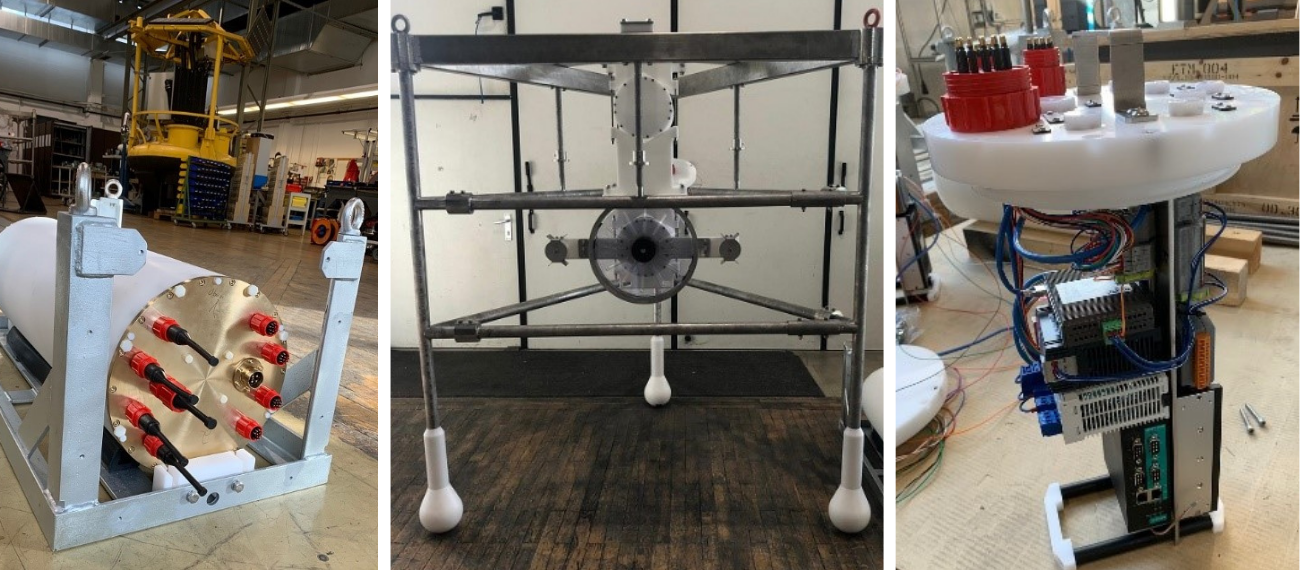UNITED Partner 4HJena finishes final Touches of Benthic Lander

Scientists from the R&D Centre of the University of Applied Sciences Kiel GmbH are striking a challenging coup to better research hydrological conditions at far offshore located seaweed and mussel cultivation systems in the North Sea.
For this undertaking, the engineering team of 4HJena (Germany) developed and built an item called a “benthic lander”. The benthic zone describes the seafloor, or in any case the “floor” of a water body. The lander is constructed like a triangular prism with a cage of metal tubing, providing a platform for scientific instruments (multi parameter probe, echo sounder, ADCP) to be mounted on. The three landing points increase its stability on more kinds of terrain than, a four-legged or flat-bottomed design.
The lander weighs about three tons and will be carefully lowered from the ship. The research team will depart early in the morning, as it takes the dive ship around 6 hours to reach the destined location. Eva Strothotte, scientific principal investigator and lead of the German project team explains, “we hope the sea stays calm enough to deploy the lander, as divers are involved to correctly position it between the seaweed and mussel cultivation systems. The work out there is most challenging, especially for our divers, due to the strong current of 1m/s”. Strothotte adds, “the extreme offshore conditions demand careful planning, which is why we have been preparing this operation for a year now”.
The German project lead elaborates, “by using this valuable and most costly piece of technology, we hope to get a better idea about how the hydrological conditions change over the course of a year and whether the ambient conditions provide a suitable environment for mussel and seaweed cultivation and how the aquaculture influences the environment”. Among other parameters, the measurement probes of the benthic lander will measure the nutrient flux within the water column, indicating the feed available for the mussels. Strothotte explains “we will use a so called fluoro probe, which allows us to distinguish between different algae, the mussels feed on. We may even be able to record toxic algae blooms, if present in that area, and shed some light on what causes or initiates them, for instance pinpointing them to certain weather events or hydrological conditions. These findings would be most valuable especially for mussel fishermen, cultivating blue mussels in the North Sea. As during toxic algae blooms, mussels must not be harvested or sold to consumers,” Strothotte reasons, is one incentive for why she and her team are so eager to better understand the environmental interactions offshore.
Starting in June, the data from the lander will be uploaded to the UNITED data base and the research team sees what the lander detects at the bottom of the North Sea 80 km from the shore.
